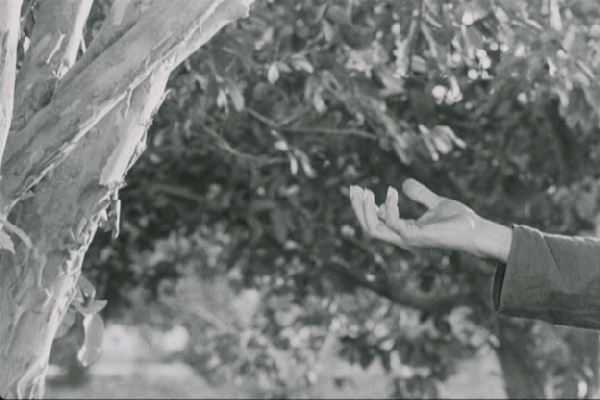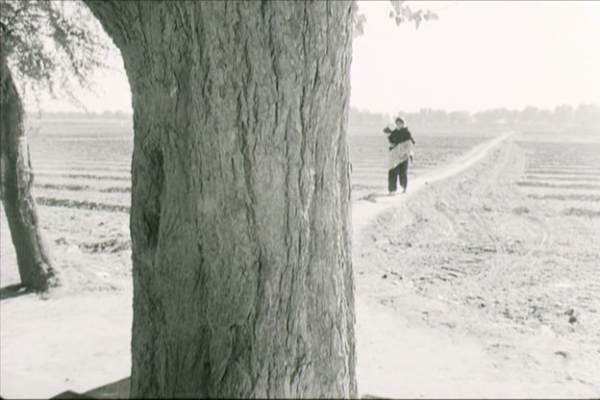 |
| The opening shots of Uski Roti: the outstretched hand – a Bressonian idiom. |
‘The environment of my kind of cinema, which is not experimental because I’ve always known what I’m doing and what the result will be, does not exist.’
The Sunday Observer, 11 July 1982
This is the first in a series of posts on filmmaker Mani Kaul who passed away in 2011. Kaul is a filmmaker who has alluded me for a long time, largely because his films are so difficult to get hold of. However, three key works including Uski Roti, Duvidha and Nazar have been restored and released on DVD. Additionally, more of Kaul’s work has been cropping up on either YouTube or as Torrents. Since his death, more has been written on Kaul and hopefully we will get to see more of his work appearing slowly on DVD. One of the sharpest and most comprehensive overviews of Kaul’s work has come from cinephile writer Srikanth Srinivasan on his blog The Seventh Art. Mark Cousins also interviewed Kaul on Indian cinema for his epic voyage through film history.
Of all the foremost Indian filmmakers to materialise from the Indian art cinema movement of the late 1960s director Mani Kaul is conceivably the one who endeavoured to modernise the language of Indian cinema, daringly shifting the focus from ideological study to cinematographic formalism. Although Robert Bresson also influenced Mrinal Sen it is Kaul’s work which demonstrates the sharpest realisation of Bressonian ideals such as introspection, ellipsis and delayed minimalism. Uski Roti, released in 1970, was Kaul’s debut and deservedly ranks alongside Ray’s Pather Panchali and Ghatak’s Meghe Dhaka Tara as a work that offered something innovative to Indian cinema, in this case facilitating to open up a new space for temporal and spatial poetics. In terms of aesthetics, most striking is Kaul’s repeated emphasis and foregrounding of objects, landscapes, faces and most notably hands. In fact, Uski Roti is a photographic compendium of hands, all strikingly captured by the eloquent black and white camerawork of K. K. Mahajan. The emphasis on hands in many of Bresson’s films was a signature motif and Kaul employs the same technique. In Uski Roti, hands tend to enter the frame with a poise and mystery that transforms communication into something metaphysically graceful and vividly abstract. What is most iconoclastic about Uski Roti is the way Kaul wholly rejects the traditions of narrative cinema by not only dispensing with plot but also inventing a radical ‘organic’ space that elongates the passing of time. Unlike Ray, Sen and even Ghatak who firmly drew narrative ideas from various established genres to manufacture melodramatic situations, Kaul allows the chosen locations to nurture and create the narrative, however negligible it is.
What follows are some quotes from Kaul, taken from various sources, on his filmmaking approach juxtaposed to screengrabs and key shots from Uski Roti.
‘When I made A Day’s Bread, I wanted to completely destroy any semblance of a realistic development, so that I could construct the film almost in the manner of a painter.’
 |
| A discernible style emerges immediately. Our view of characters throughout are obscured by the positioning of people and objects, creating a cinematographic ellipsis within the frame itself. |
‘I constructed A Day’s Bread shot by shot, in this second way, so that the “figure” of the narrative is almost not taking shape in realistic terms. All the cuts are delayed, though there is a pre-empting of the generally even rhythm sometimes, when the film is a projection of the woman’s fantasies.’
‘I believe the camera is not something you’re seeing through; it’s the way your body extends into life. You have to learn to hold the camera with your rhythm, and not just have an idea in your head and try to illustrate that idea.’
‘Now, do you think Bresson was visual? That will be a ridiculous statement! The man used one or two lenses all his life…
…Most shots were static or had minimal movements. The models always stood at a medium distance from the camera. The eye-level was of an average human height – neither low nor high. No sharp angles. There was never a question of zooming in and out…
…The lighting was evocative of an overall environment and the philosophical context he was elaborating upon but never ever expressing something stridently individual – there is nothing in Bresson that can make us call him a visual artist…
…His shots were ‘ironed’ out as he himself declared. There were no visual creases that could get our attention for their pictorial detail.’
‘The suggestion of time in Bresson, of what Deleuze described as the realisation of the time-image in his work, is of the greatest importance to the history of cinema. It will take time before we can grasp significance of Bresson’s work. People wrongly imagine that we have left the Bressonian vision behind and gone beyond, that he is old hat by now.’
 |
| Uski Roti (1970) |
 |
| Pickpocket (1959) |
 |
|
Channel Four will be screening Uski Roti on Sun 13 May as part of a season on Indian cinema.
|




Leave a comment